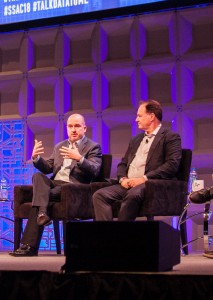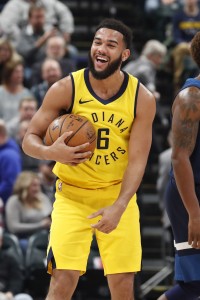Tanking remains a major topic of debate in the NBA and it was one of several issues that dominated this year’s MIT Sloan Sports Analytics Conference. The split between those who believe in the strategy and those who loathe it was apparent at the Boston Convention and Exhibition Center last weekend.
Former Sixers GM Sam Hinkie headlined a panel conveniently named: Trust the Process? Team Building And Rebuilding In The NBA. While the audience appeared to be a pro-Hinkie crowd, the father of The Process clearly was ready to face some criticism up on the stage.
“If we run out of things to talk about, I’ll just lay on the stage and everyone can just kick me in the ribs,” Hinkie said to begin the panel.
Hinkie didn’t face too much scrutiny during the high-energy event, though Celtics co-owner Steve Pagliuca made it clear he wasn’t a fan of the former GM’s previous strategy.
“I actually don’t think statistically that the process, as it’s defined to me, actually works,” Pagliuca said. “Because there just [aren’t] enough good odds to get the great player, so if you really bottom out, first of all, you have to get the pick. You have to win the lottery. Second of all, there has to be a great draft where there is a LeBron. Most drafts, the ninth player in one draft is as good as the best player in the next draft. So when you do all the odds, surely going in that direction, to me, is a bad strategy.”
There seems to be optimism around the league that teams can find franchise players in the draft even if their picks don’t fall near the top of the lottery, something I referred to during my appearance on NBAMath’s Hardwood Knocks podcast.
Clippers executive Lawrence Frank touched upon this belief when talking about the Blake Griffin trade. The deal netted Los Angeles a lightly-protected first-round pick from the Pistons, which is currently slotted as the 12th selection, as our Reverse Standings show.
“Steve Nash sat on this panel. What number was he picked? 15th. Giannis Antetokounmpo: 15th. Kawhi Leonard: 15th. You have to be able to nail [the pick]. Donovan Mitchell: 13th,” Frank said.
Rockets GM Daryl Morey can understand why some top talent falls in the draft. “As a league, we are getting worse at drafting,” Morey said during his conversation with President Barack Obama.
Still, acquiring top talent with middling picks means that front offices must sometimes get lucky. Franchises picking far from the top must identify the talent and hope that the teams ahead of them in the draft fail to do so. That’s why tanking remains an active strategy in the NBA.
The league is keeping an eye out for this strategy, promising to take action against teams that abuse the system.
“If we ever received evidence that players or coaches were attempting to lose or otherwise taking steps to cause any game to result otherwise than on its competitive merits, that conduct would be met with the swiftest and harshest response possible from the league office,” commissioner Adam Silver recently said in a memo to all 30 teams.
In an attempt to dissuade tanking, the NBA has revamped its lottery format. Starting in 2019, the odds from top-to-bottom will be altered, with the odds at landing the No. 1 overall pick reducing more gradually from 1-to-14 than in the previous format.
This is all happening while Philadelphia’s maligned plan seems to be working. The Sixers, fresh off of a statement win over the Cavs, appear to be heading to the playoffs for the first time since the 2011/12 campaign. The franchise has two of the league’s brightest young stars and the flexibility to add additional talent without making huge sacrifices. They have a case to present to LeBron James that would, at a minimum, make him think about a relocation to the City of Brotherly Love, though he recently shut down the rumors of him looking to move his family to Pennsylvania.
Regardless of opinion, The Process may be a once-in-a-lifetime occurrence. With the change in lottery format, the distaste for tanking among many owners, and the surreal optimism surrounding a wide-range of draft picks, it appears the league may never see another multi-year, Hinkie-esque strategy — despite the appearance of a proof of concept.
Photo courtesy of MIT’s Andrew Geraghty

